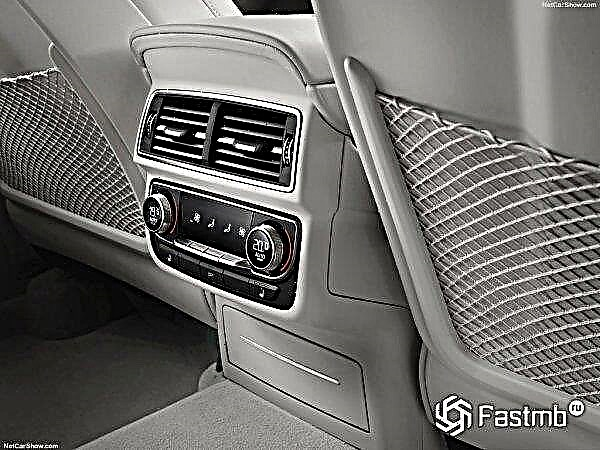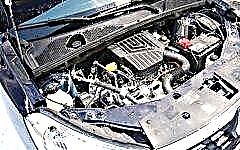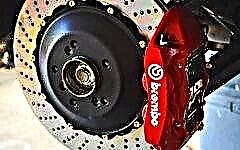

The content of the article:
- What is a brake pad
- Variety
- Wear and minimum thickness
- Effects
The braking system in a car is just as important as the engine or steering. Regardless of the cost, class or country of assembly of the car, sooner or later you will need to replace the brake pads. Many drivers pay attention to the fact that this part of the brake mechanism requires no less attention than the unit or other parts. The safety of the driver and passengers directly depends on the quality of the brakes.
What is a brake pad in a car?

A car brake pad is a part of the brake system, which can be found in both disc and drum brakes. It is thanks to the brake pad that friction is created, as a result of which the vehicle speed is reduced. The braking distance also depends on the compressive force of these elements and the thickness of the friction surface. That is why these elements need to be changed in a timely manner.
The appearance of the brake pads depends on the type of brake system (drum or disc). For disc mechanisms, these are ordinary plates, with characteristic slight bends for each model and car brand. As far as drum brakes are concerned, the brake elements are crescent-shaped, curved to the shape of the drum itself. Pads have been known since ancient times, they were first used on carriages, and they were made of wood. Actuated by means of a manual drive. Modern elements are made of a metal plate and a friction lining, in total repeating the shape of the surface with which contact will occur.
The composition of the friction lining includes various types of resins, ceramics, synthetic rubber, mineral and organic fibers, as well as various substances that improve friction and remove excess heat. Yet, like any moving mechanism, brake pads wear out, and the moment of a critical point comes when replacement is necessary or further operation will lead to serious consequences.
Variety of brake pads

Like cars, brake pads are also differentiated by function and quality. Experts distinguish 4 main types:
- Street;
- Sport;
- Track;
- Racing.
Outwardly, the differences are minimal, but there are differences in structure and daily purpose. So classification Street used for everyday driving in urban or suburban cycle, the maximum temperature is up to 550 degrees Celsius. Second option Sport used for active city driving, due to which it received the corresponding name. Logically, the temperature of the operating limit is higher and is 650 degrees Celsius, it is also possible that noise appears at the time of braking, and this is within the normal range. Track responsible for the maximum load on the track, this is rather a professional version. The maximum operating temperature is 750 degrees Celsius, and at a temperature of 100 degrees Celsius, the braking efficiency decreases. The main disadvantage is the constant presence of noise and increased wear of the brake discs. The last option Racing practically does not differ from Track, both in purpose and in specification, but here is the maximum temperature of 850 C. Many drivers say that there are no universal or ideal brake pads. They all differ in purpose, shape and quality.
What is the minimum thickness of the pads?

As a rule, the front and rear brake pads of a car wear out differently, respectively, the thickness of the friction surface will also be different. It is known from practice that the front elements are erased faster than the rear ones, since at the moment of braking the main load goes to the front of the car. The question remains how to understand that the brake pads are being erased and must be replaced.
A frequent and probably the main sign for an early replacement of brake pads is the appearance of a sound with each braking. Typically, this sound is reminiscent of metal rubbing against metal or glass. Also, by pressing the brake pedal, beating and vibration appear. According to experts, the permissible minimum thickness of the pads is 2 mm. A reading below 2 mm indicates critical wear and requires urgent replacement.

Modern cars are distinguished by the presence of a variety of sensors, control systems and monitoring of pad wear. In such a car, the driver will simply be informed by the sensor or a message on the display, and the driver will have to go to the service or replace worn parts on his own. Therefore, no difficulties should arise, another question is when the car is not equipped with such systems and the driver himself needs to determine the minimum thickness of the brake pads.
For novice car enthusiasts, this is a whole task, since measuring the thickness at first glance is not so easy, because the part is located behind the wheel and is hidden in the caliper. In fact, everything is much simpler, the caliper is equipped with a special window, specially designed to measure the remainder of the pad thickness. It is also not difficult to measure, first we unscrew the wheel, and then the thickness is measured using a caliper, micrometer or other devices. At the same time, you can see how tightly the pad fits to the disc, which indicates uniform wear or the presence of disc defects.
What are the consequences of worn out brake pads?

As already mentioned, the braking system of a car is as important an element as the engine or the steering wheel. Untimely replaced parts can damage the entire mechanism and provoke an accident. If it aggravates in the details, then the wear of the brake pads will first of all bring an unpleasant squeak, vibration at the moment of braking and an increase in the braking distance.
A more experienced driver will notice an increase in pedal travel, deterioration in handbrake performance and a decrease in the level of brake fluid in the reservoir. If these factors are not taken into account in time, the consequences can be the most unpredictable. As an example, at the most inopportune moment the braking system may fail. Worse, such wear and tear on parts will lead to overheating of the brake and wheel discs. In the best case, the disks will receive mechanical damage, in the worst case, a rupture and an accident.
Having considered the main points and the minimum thickness of the brake pads, it should be understood that checking the braking system is considered mandatory before every long trip. It does not take much time and effort, however, it will give confidence in the safety of the car and the reliability of the braking mechanism.











